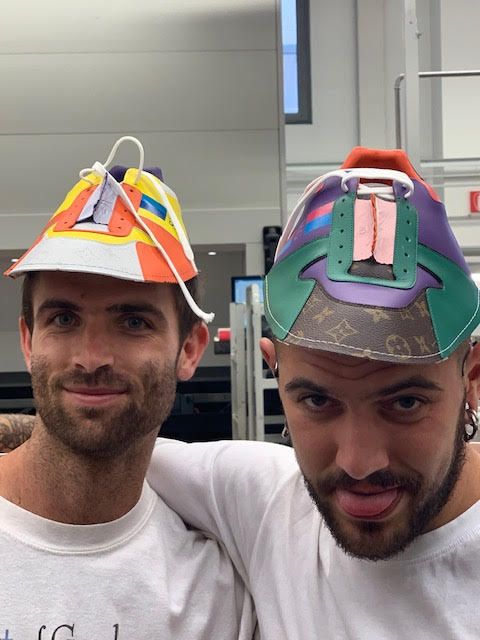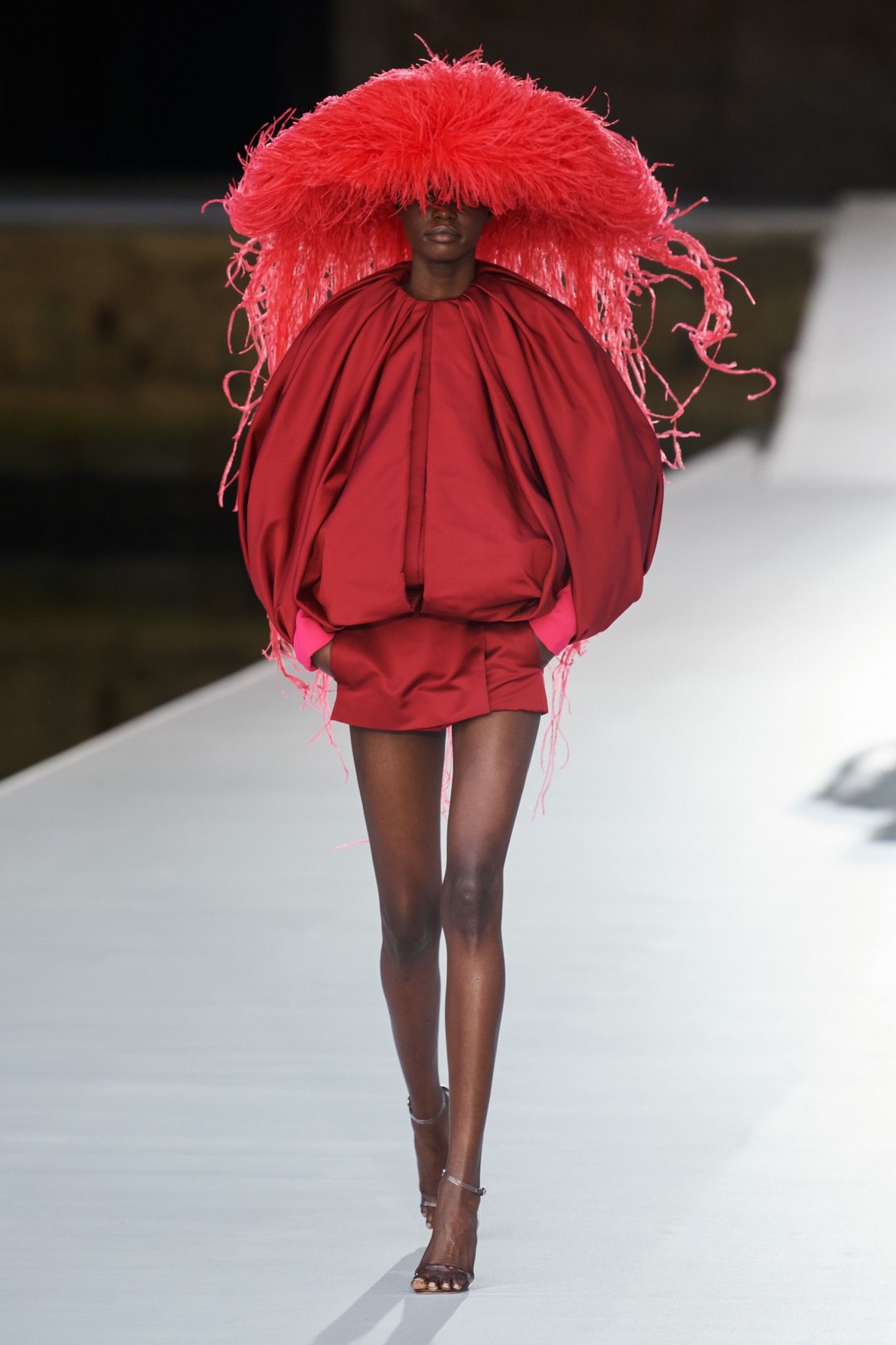Venice Architecture Biennale 2016: the Arrival of the Arrival City

The chirping of birds echoes off white high ceilings, a glistening lagoon peaks through rustling bushes, and comforting breezes cut through each other diagonally, while an oversize cup of Ayran refreshes the palate. A quick glance up past imposing pillars and the onlooker’s dreamlike state is shaken by a single word: GERMANIA, a reminder of Hitler’s revamping of the German Pavilion in 1938, in accordance with Nazi standards. At the opening of the 15th Venice Architecture Biennale last weekend, the German Pavilion was revealed under the title “Making Heimat. Germany, Arrival Country” – a plea aimed at opening the minds and hearts of Europeans towards the huge influx of migrants. The historical identity of the Pavilion serves as a warning – of what this state was once capable of, and of what might occur if too many turn a blind eye.
The designers of this year’s exhibition are Julian Schubert, Elena Schuetz, and Leonard Streich, founding partners of the Berlin-based young architectural practice Something Fantastic. The trio focuses on creating concepts based on rapidly changing urban environments and communal housing and teaches at the ETH Zürich, where they aim to develop innovative plans with their students for low-cost social housing. They designed the plans and concept for the German representative house while working with the DAM, the German Architectural Museum, which curated the pavilion, and Doug Saunders, author of Arrival City. Saunders’s book served as the inspiration for the claims of the exhibition, which are written on the walls of the pavilion:
The Arrival City is a city within a city.
The Arrival City is affordable.
The Arrival City is close to business.
The Arrival City is informal.
The Arrival City is self-built.
The Arrival City is on the ground floor.
The Arrival City is a network of immigrants.
The Arrival City needs the best schools.
According to Saunders, we are in the middle of the final wave of urbanization. The “Arrival City” is exactly what it claims to be: a temporary point of arrival into a new urban area. Examples of arrival cities include everything from Cidade de Deus in Rio de Janeiro to Neukölln in Berlin, Dharavi in Mumbai to Peckham in London. In his work, he has argued that successful arrival cities are beneficial to all, and create prosperous citizens out of their inhabitants, while failed ones exacerbate poverty and other social issues. Instead of ignoring – or even bulldozing – them, they must be fostered by the surrounding area and meet certain criteria. “Arrival cities are neighborhoods where people live that can not yet participate in the urban economy. At first sight those neighborhoods might look ‘bad.’ They are called slums, or favelas, or shantytowns,” Something Fantastic explains. “They seem to stagnate, but actually they don’t. They help people settle into new economies. They are the first step on the trip. People leave those neighborhoods behind after a while, they integrate, find better jobs. Those places are actually highly agile, and that is the change of perspective we want to achieve from this exhibition.”

An ever-recurring discussion surrounding the Venice Biennale is the fact that the German Pavilion is a physical remnant of the Third Reich. Participants in the past have struggled dealing with this by covering the structure in plastic sheets, smashing up the floor to the entrance hall, and even suggesting tearing down the entire building. While Europe’s right-wing tendency is growing rapidly and millions of people are facing closed European borders, looking for shelter, the question of what to do with the fascist structure remains. Should it be erased – angrily torn to bits and stomped into the ground? Should it be preserved, so that the horrific acts are not just never forgotten, but actively contemplated? Or is it fruitless to think of buildings only as manifestations of ideologies?
This year, numerous large holes were created in the walls of the pavilion to symbolize the opening of Germany’s borders. “Usually, you’re not even allowed to put a nail in the wall,” Leonard Streich says. “I think that because of the political situation in Germany, and with all the hyped-up fear that was around at the time when we were proposing the idea, it was like ‘Yeah, maybe a statement like this is needed and necessary, and it’s more important to make this statement than to preserve the originality of these walls.’” However, the walls must be returned to their original state after the exhibition. In a pavilion weighted with symbolism, these temporary openings create an uneasy vision of a possible future in which Europe could permanently close itself off to the rest of the world. The bricks are waiting to be placed back into the gaps, stacked neatly under transparent plastic sheets, serving as tables and benches within the pavilion.

A sea of plastic white chairs serve as an alternative seating option. They are scattered in and around the German Pavilion. The generic chairs that everyone has sat on, be it on a friend’s patio, or at a café in Vietnam. “I think the chairs manifest the ideas of Arrival Cities. They are cheap, lightweight, and practical – people use them generously. We are not really presenting architecture. We are trying to present the ideas, and the possibilities, and the characteristics of Arrival Cities through everything. Through the furniture, through the space, and of course through the writing,” Elena Schuetz says. “It’s a lot about space. There is no form. There is no gesture,” Julian Schubert adds about the plan of the exhibition. “It’s a comment and it’s a plea. A plea that we hope will be heard, somehow.”
This year’s German Pavilion takes a clear position regarding the current political climate. It is about a mind-set, about fighting for the right to be mobile, about a mentality, about sharing space. “I think we are in a very interesting time, but also a crucial one. Borders are being closed. We grew up in a time that was very global. You could travel anywhere. And now already it seems that that was a special time,” Schubert says. “To be a point of arrival for those who are in need, who are fleeing from war, and even those who are just searching for a better life, yes, it should be Germany’s role as much as it should be any other country’s role to be welcoming.”
The 15th International Architecture Biennale in Venice is on display from May 28th 2016 until November 27th 2016.
Text: EVA KELLEY

